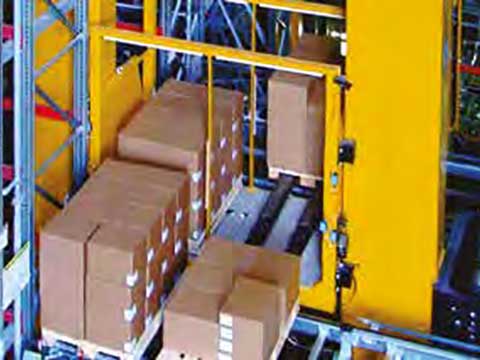
Posted to News on 4th Apr 2024, 15:30
Inductive sensors improve on mechanical breakers to give a platform a lift
An upgrade project for a platform lift used in a materials handling installation had its old mechanical limit switches swapped-out for 2-wire inductive sensors from Contrinex to verify that loads are properly positioned before allowing the lift to move.

(See Plus Automation at FoodManufacturing.Live, 1 May 2024, on stand 49)
Cartons or pallets stacked on a lift platform in the down position may become unstable when the lift position changes. Also, if a load has any protruding parts, they may snag the edge of a floor as the lift rises or descends. This causes tipping, which can result in damage to both the load and the installation, with a risk of injury to persons nearby.
A metal bar is fitted on the lift to ensure the correct load position. Unless this bar has been pivoted into its cradle, the lift will not start. Also, any subsequent movement of the safety bar caused by an unstable load will stop the platform. Generally, this is a very simple electrical scheme with only AC power available on site.
Mechanical limit switches were proving to be unreliable because the frequent switching was wearing out the mechanical contacts, whilst dust and moisture also adversely affected reliability. The customer therefore wanted an equally simple, non-contact solution.
A Contrinex inductive sensor from its 600 Series family fulfils the customer's requirements. To verify that the bar has cleared the load and lodged in the cradle, a 2-wire AC/DC sensor with a 4 mm operating distance is embedded in the cradle itself. The sub-flush mounting position protects the sensing face from any mechanical contact.
With a wide voltage range and short-circuit protection, these sensors also meet the customer's on-site electrical requirements. Since the safety bar can become deformed with prolonged use, a sensor is chosen with an increased operating distance. This allows compensation for gradual target drift by simple range adjustment, rather than by repositioning the sensor itself.
The sensor closes an enabling circuit for the start button, which in turn latches a relay controlling the lift motor. Any movement of the safety bar caused by an unstable load will open the circuit and unlatch the relay, stopping unsafe movement of the platform.






